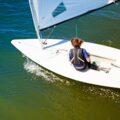How to fall asleep and stay asleep – a yogic hack.
When you’re offshore, your ability to fall asleep and stay asleep is dramatically impacted. Let me share some sleep tips for offshore workers.
The 12 hour shifts, the night shifts, the changes of shifts half-way through your hitch, can play havoc with your circadian rhythm – your sleep pattern.
At the center of your brain lies a tiny little gland called the pineal gland. It is responsible for the production of melatonin: the sleep hormone, and low level of this molecule causes sleep disruption.
Scientists say that human beings should have at least 1h of exposure to day light every day to help stimulate production of melatonin. But we know that’s not always possible!
So how can you boost your melatonin levels while working offshore?
There are many studies have demonstrated the positive effects of Pranayama, a yogic breathing exercises. One study in particular focused on the melatonin production, and found that “The plasma melatonin had increased after three months of yogic practices” and concluded that “These observations suggest that yogic practices can be used as psychophysiological stimuli to increase endogenous secretion of melatonin, which, in turn, might be responsible for improved sense of well-being.”
In short, a regular yoga practice contributes to better sleep and better health. Say no more!
How do you do it?
There are many different yogic breathing exercises, and most will have the same positive effects. Pranayama emphasizes the length of the exhale, which in turn stimulates your Vagus nerve, a massive 80% of your parasympathetic nervous system.
This part of your nervous system is the part we usually cannot control, and it is responsible for calming things down in your body. It’s the ultimate weapon against stress, and you can access it through breathing. Pretty cool isn’t it?
In my video “How to fall asleep and stay asleep when doing shift work offshore”, I’m teaching you how to practice Bhramari Pranayama: bee breath.
This breathing exercise is one of the easiest to practice, and it can induce a meditative state, reducing stress and creating an ideal state for sleep!
In another study published in 2016, it is said that “High frequency paroxysmal gamma wave pattern is observed in the participants immediately after practicing the Bhramari Pranayama”**
Now what does that mean?
Gamma waves have the highest frequency. It indicates that your brain is in intense focus and concentration; in problem solving mode. And of course, it has been proven by EEG that they can be achieved in meditation. Hence why we feel so relaxed and gain clarity after meditation. Less stress and more light bulbs moments please!
In conclusion
Yogic breathing exercises are proven to relax the body, counteract the effects of stress, and increase the production of melatonin. What’s more, bee breath will induce a meditative state, clearing busy brains so you can fall and stay sound asleep! So go on, set the timer for 5 minutes, and get humming. This can dramatically improve your mental health and sleep.
Sources:
*“Effects of Hatha yoga and Omkar meditation on cardiorespiratory performance, psychologic profile, and melatonin secretion” K. Harinath, Anand Sawarup Malhotra, K. Pal, R. Prasad, R. Kumar, T. Kain, L. Rai, R. Sawhney
**”Immediate Effects of Bhramari Pranayama on Resting Cardiovascular Parameters in Healthy Adolescents” Maheshkumar Kuppusamy, Dilara Kamaldeen, Ravishankar Pitani, and Julius Amaldas.
Read my blog article on my blog on breathing and the nervous system here.









Recent Comments